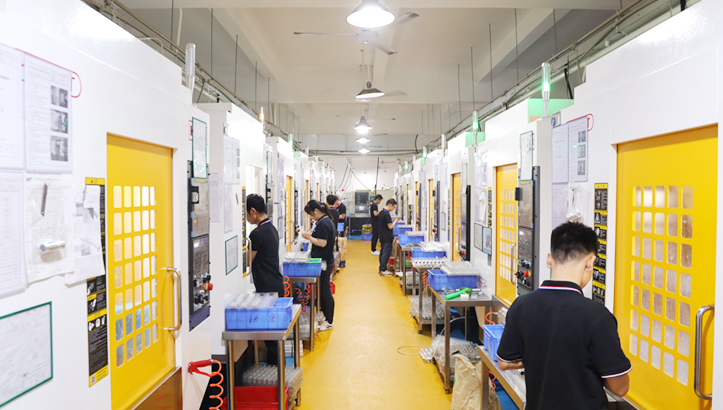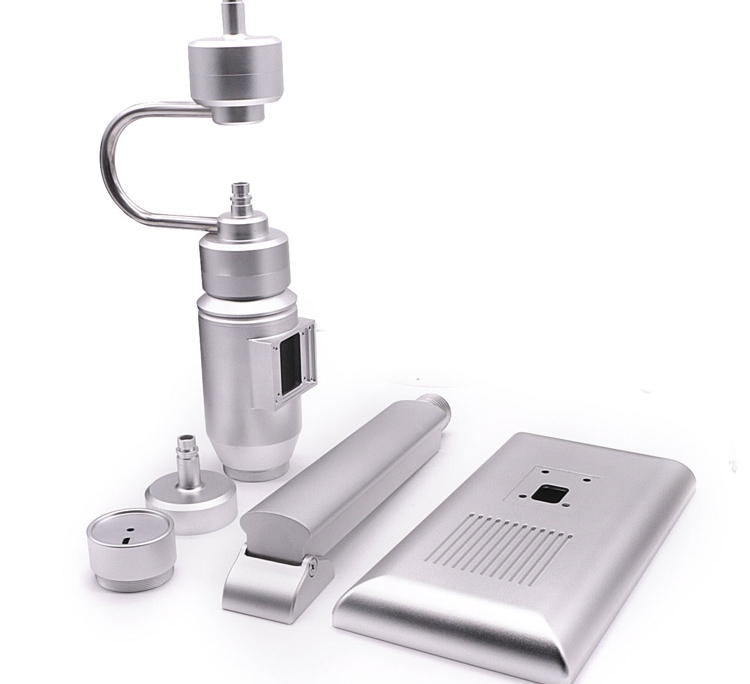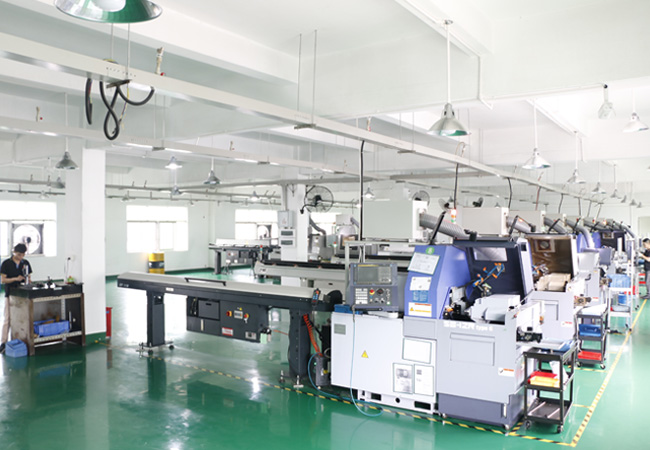What Is a CNC Machine and How It Works
You might wonder what makes modern manufacturing so efficient and precise. The answer often lies in the use of CNC machines. These computer-controlled marvels have revolutionized the industry by ensuring accuracy, consistency, and efficiency in production. As industries strive for greater productivity, CNC technology becomes indispensable. The market for CNC machines is booming, with projections showing growth from USD 67.5 billion in 2023 to USD 80.4 billion by 2028. This surge highlights their critical role in shaping the future of manufacturing.
What is a CNC Machine?
A CNC machine, or Computer Numerical Control machine, represents a significant advancement in manufacturing technology. It automates the control of machining tools through a computer, allowing for precise and efficient production. Unlike traditional machines, CNC machines operate based on pre-programmed software, which dictates their movements and functions. This automation ensures high accuracy and repeatability, making CNC machines indispensable in modern manufacturing.

History of CNC Technology
The journey of CNC technology began in the 1940s with the development of the earliest numerical control machines. These machines marked the transition from analog to digital computing, paving the way for CNC machining. By the 1960s, the introduction of Computer Numerical Control revolutionized machining capabilities, offering greater precision and flexibility. The 1970s saw further advancements with the integration of digital technologies and automation, leading to the development of CNC machine tools. In 1972, the integration of CAD and CAM systems into CNC machining spurred massive developments, enhancing the efficiency and versatility of CNC machines.
Basic Components of CNC
Hardware Components
CNC machines consist of several key hardware components that work together to perform complex tasks. These include:
Control Unit: Acts as the brain of the CNC machine, processing the instructions from the software and directing the machine’s movements.
Machine Tool: The physical component that performs the actual machining, such as cutting, drilling, or milling.
Motors and Drives: Responsible for moving the machine tool along the specified paths with precision.
Feedback System: Ensures accuracy by monitoring the position and speed of the machine tool and making necessary adjustments.
Software Components
The software components of a CNC machine are equally crucial in its operation. They include:
CAD Software: Used to design the parts or products that the CNC machine will create. It allows for detailed and precise designs.
CAM Software: Converts the CAD designs into CNC code, which the machine can understand and execute.
Control Software: Interfaces with the hardware to execute the CNC code, ensuring the machine operates as intended.
These components work in harmony to transform raw materials into finished products with remarkable precision and efficiency. Understanding these elements provides insight into the capabilities and advantages of CNC machines in the manufacturing industry.
Types of CNC Machines
In the world of manufacturing, CNC machines come in various types, each designed to perform specific tasks with precision and efficiency. Understanding these types will help you appreciate their capabilities and applications.
CNC Milling Machines
Features and Capabilities
CNC milling machines are among the most versatile CNC machines available. They use computer controls to cut materials, performing functions such as face milling, shoulder milling, tapping, drilling, and turning. These machines can handle a wide range of materials, including metals, plastics, and wood. The precision of CNC milling machines allows for the creation of complex parts with intricate details that manual operations cannot achieve. Their ability to execute precise and complex cuts makes them indispensable in industries like aerospace and automotive.
Common Uses
You will find CNC milling machines widely used in various industries due to their versatility. They are essential in the production of automotive parts, aerospace components, and even medical devices. Their ability to produce intricate parts with exceptional accuracy makes them ideal for creating prototypes and custom-designed parts. Whether you are working on small electronic components or large-scale industrial parts, CNC milling machines offer the precision and efficiency needed for high-quality manufacturing.

CNC Lathes
Features and Capabilities
CNC lathes are designed to cut workpieces as they rotate, offering precision and compactness compared to manual lathes. These machines excel in producing cylindrical parts, such as shafts, bolts, and screws. The computerized control of CNC lathes ensures consistent quality and reduces the risk of human error. With the ability to perform multiple operations in a single setup, CNC lathes enhance productivity and reduce production time.
Common Uses
In industries where precision and efficiency are paramount, CNC lathes play a crucial role. You will often see them in action in the automotive and aerospace sectors, where they produce components like engine parts and landing gear. Their ability to handle complex geometries and tight tolerances makes them ideal for high-volume production runs. CNC lathes are also used in the creation of custom parts for various applications, from industrial machinery to consumer electronics.
CNC Plasma Cutters
CNC plasma cutters use a high-velocity jet of ionized gas to cut through electrically conductive materials like steel and aluminum. These machines are known for their speed and precision, making them ideal for cutting large sheets of metal quickly and accurately. You will find CNC plasma cutters commonly used in metal fabrication shops, automotive repair, and construction industries. Their ability to produce clean and precise cuts makes them a valuable tool for any project requiring metal cutting.
By understanding the different types of CNC machines and their capabilities, you can better appreciate their role in modern manufacturing. Each type of CNC machine offers unique advantages, allowing you to choose the right tool for your specific needs and applications.
How CNC Machines Work
Understanding how a CNC machine operates can enhance your appreciation of its capabilities and applications. The process involves several key steps, from design to execution, ensuring precision and efficiency in manufacturing.
1. Design and Preparation:
Before a CNC machine can begin machining, the design phase is crucial. Engineering designers must consider the capabilities and limitations of the CNC machine, including its processing range, accuracy, speed, and material compatibility. This ensures that the designed product can be efficiently and accurately manufactured on the machine. With CAD/CAM technology, Engineering designers can seamlessly integrate their designs with the manufacturing process by importing design data directly into the CNC machine’s control system. Also select the appropriate tool, fixture and workpiece material.

2. CNC Programming:
Programming is a vital step in the operation of a CNC machine. Programming personnel develop a program that controls the machine’s movements based on design drawings and processing requirements. This program dictates how the tool should move, selects the processing path, and sets the necessary processing parameters. To ensure accuracy and safety, simulation software is often used to predict processing results and check for potential collisions.
3. Machining:
Once the CNC programming steps are completed, the CNC machine’s control system automatically controls the tool’s movement trajectory and processing parameters according to the preset program. This ensures precise machining of the workpiece, with high dimensional accuracy and surface quality due to the machine’s precision and stability.
4. Post-machining and Inspection:
After machining, the finished products undergo inspection to verify compliance with design requirements. This includes dimensional measurements, geometric tolerance checks, and surface quality inspections. Any unqualified products are reworked or scrapped as necessary. Additionally, products requiring subsequent machining, such as painting or assembly, undergo corresponding post-processing work.
Practical Applications of CNC Machines
CNC machines have become integral to various industries, transforming how products are manufactured. Their precision and efficiency make them indispensable in sectors where accuracy and consistency are paramount.
Automotive Industry
In the automotive industry, CNC machines play a crucial role in producing complex components with high precision. You will find CNC machines used to manufacture engine parts, transmission components, and intricate body panels. The ability to produce parts with tight tolerances ensures that vehicles meet safety and performance standards. CNC technology also allows for rapid prototyping, enabling manufacturers to test new designs and innovations quickly. This capability accelerates the development process and helps the automotive industry stay competitive in a fast-paced market.
Aerospace Industry
The aerospace industry demands the highest levels of precision and reliability. CNC machines excel in this environment by producing components like turbine blades, landing gear, and structural parts. These machines can handle advanced materials such as titanium and composites, which are essential for modern aircraft. By using CNC technology, you can achieve the exact specifications required for aerospace applications, ensuring safety and performance. The automation provided by CNC machines reduces the risk of human error, enhancing the overall quality of aerospace components.
Benefits of CNC Machining
Precision and Accuracy
CNC machines offer unparalleled precision and accuracy, making them ideal for industries that require exact specifications. The computerized control of these machines ensures that each part is produced consistently, reducing variability and waste. You can rely on CNC machines to create intricate designs and complex geometries that would be challenging to achieve manually. This precision is particularly beneficial in the medical industry, where components like surgical instruments and implants must meet stringent standards.
Efficiency and Productivity
The efficiency of CNC machines significantly boosts productivity in manufacturing. By automating the machining process, you can reduce production times and increase output. CNC machines can operate continuously, allowing for high-volume production runs without compromising quality. This efficiency translates into cost savings and faster turnaround times, enabling you to meet customer demands more effectively. Additionally, the versatility of CNC machines allows you to switch between different tasks quickly, further enhancing productivity.
CNC machines have revolutionized manufacturing across various industries by providing precision, efficiency, and versatility. As technology continues to advance, the role of CNC machines will only grow, offering even more opportunities for innovation and improvement in manufacturing processes.
In Conclusion
CNC machines have become indispensable in modern manufacturing, offering unmatched precision and efficiency. Their versatility allows you to create complex components across various industries, from automotive to aerospace. As the demand for high precision and reduced operating costs grows, CNC technology continues to drive market growth.

Are you looking for a partner in the field of CNC machining? VMT is undoubtedly your ideal choice. VMT is proficient in milling, boring, drilling, tapping and thread cutting and other exquisite processing technologies, and can easily cope with the challenges of processing workpieces of various complex shapes. With excellent processing capabilities and high adaptability, we can perfectly meet the processing needs of different industries and bring you unprecedented flexibility and efficiency.
Frequently Asked Questions About CNC
What is CNC vs CNC Milling??
CNC is a computer numerical control technology used to control machine tools for automated processing. CNC milling uses this technology to remove workpiece material through a rotating tool to form the desired shape. CNC technology improves processing accuracy and efficiency, and CNC milling is widely used in small to medium batch production of metal and plastic parts.
Is CNC a Good Career??
CNC machining is a good career choice in the field of manufacturing and precision machinery, because the industry has a large demand, considerable salary, stable work, and can cultivate technical skills, attention to details and problem-solving skills. It is suitable for those who love machinery and are willing to learn new skills, providing growth and promotion opportunities. But it also requires diligence, focus and continuous learning.



